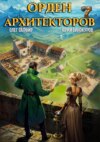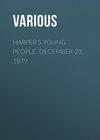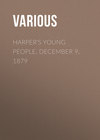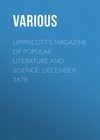Kitabı oku: «Birds and Nature Vol. 11 No. 2 [February 1902]»
FEBRUARY
But Winter has yet brighter scenes – he boasts
Splendors beyond what gorgeous summer knows;
Or Autumn with his many fruits, and woods
All flushed with many hues. Come when the rains
Have glazed the snow and clothed the trees with ice,
While the slant sun of February pours
Into the bowers a flood of light. Approach!
The incrusted surface shall upbear thy steps,
And the broad arching portals of the grove
Welcome thy entering. Look! the massy trunks
Are cased in the pure crystal; each light spray,
Nodding and tinkling in the breath of heaven,
Is studded with its trembling water-drops,
That glimmer with an amethystine light.
But round the parent-stem the long low boughs
Bend, in a glittering ring, and arbors hide
The glassy floor. Oh! you might deem the spot
The spacious cavern of some virgin mine,
Deep in the womb of earth – where the gems grow,
And diamonds put forth radiant rods and bud
While amethyst and topaz – and the place
Lit up, most royally, with the pure beam
That dwells in them. * * * *
– William Cullen Bryant, “A Winter Piece.”
THE BLUE-HEADED VIREO
(Vireo solitarius.)
The Blue-headed Vireo, or its varieties, of which there are several, frequent nearly the whole of North America. The typical form of the species, that of our illustration, has a range covering Eastern North America and extending westward to the great plains. It breeds from Southern New England and the lake states northward to Hudson Bay and southward in the higher altitudes of the Alleghenies. It passes the winter in Cuba, Mexico and Central America. The Blue-headed Vireo is frequently called the Solitary Vireo, or Greenlet, because of its retiring habits. It is a bird of the forest and stays very close in these quiet retreats. Yet it is, as a rule, easy of approach, seeming to possess both curiosity and confidence. Mr. Bradford Torrey writes with enthusiasm regarding the pretty habits of this bird. He says: “Its most winning trait is its tameness. Wood bird as it is, it will sometimes permit the greatest familiarities. Two birds I have seen which allowed themselves to be stroked in the freest manner while sitting on the eggs, and which ate from my hand as readily as any pet canary; but I have seen others that complained loudly whenever I approached their tree. Perhaps they had had sad experiences.”
Possessing a happy and cheerful disposition, this species, like the other vireos, sings while working. Listening to them, we are reminded of the lines in “The Vision of Sir Launfal” —
“The little birds sang as if it were
The one day of summer in all the year,
And the very leaves seemed to sing on the trees.”
Fortunate, indeed, is he who has the pleasure of watching this Vireo working upon its home and uttering “inexpressibly sweet and tender love notes.”
Mr. Thomas M. Brewer says that the Blue-headed Vireo “usually makes a nest of coarse materials somewhat loosely put together, covering it with lichens, thus assimilating it to the moss-covered limb from which it is suspended.” The materials used, however, are not always the same. One nest, of which Mr. Brewer speaks, was “covered over, as if cemented, with bits of newspaper.” The external portion of another was “composed of the silky cover of cocoons, woven into a homogeneous and clothlike fabric, by some process quite inexplicable.” The nests are frequently constructed of fine bark fibers, withered grass and pine needles woven together with moss and lined with plant down, fine grass and small, fibrous roots.
Much has been written regarding the song of this handsome bird of the woods. The words of Mr. Torrey perhaps best describe it. He says: “The Solitary’s song is matchless for the tenderness of its cadence, while in peculiarly happy moments the bird indulges in a continuous warble that is really enchanting.” It has, too, a musical chatter and a pretty trilled whistle.
In Mr. Keyser’s experience “the song was varied and lively, sometimes running high in the scale, and had not that absent-minded air which marks the roundelay of the warbling vireo. It is much more intense and expressive.”
Mr. Brewer describes the song as a “prolonged and very peculiar ditty, repeated at frequent intervals and always identical. It begins with a lively and pleasant warble, of a gradually ascending scale, which at a certain pitch suddenly breaks down into a falsetto note. The song then rises again in a single note and ceases.”
The notes of the female suggest to Mr. Burroughs “the bleating of a tiny lambkin.” To Mr. Nuttall “its song seems to be intermediate between that of the red-eyed and the yellow-breasted species, having the ‘preai, preai,’ of the latter and the fine variety of the former in its tones.” To all “the music of the Solitary Vireo is delicious.”
BOOK AND MRS. OYSTER
At the death of his dear mother little Willis went from his western farm home to stay for a few years with his Aunt Jennie in an eastern seaport town.
One day she had oysters in the shell for dinner. As his parents had wisely tried to keep his eyes and ears keen in regard to common things, he was full of questions.
His aunt told him that the next time she bought live oysters she would give him some to watch and study. Only a few weeks later she was expecting company to dinner and had a chance to keep her word.
“Fill this with water,” said she, giving him a plain glass fruit dish, “and put your oyster in it.”
“But,” said Willis, “oysters live in sea water, which is salty.”
“Yes; they do live in sea water. In order to grow and thrive they must have vegetable and mineral substances found in sea water. But they can live in fresh water. Oystermen make a practice of moving them from their banks to spots near the mouth of a river where the water is not nearly so salty or even quite fresh. Here they get washed out and freshened. They look plumper and some of the strong, salty taste being taken away, they have a more delicate flavor. All the largest oysters in the market are fattened in that way.”
Willis did as directed.
“Do you notice how the oyster is covered?” asked his aunt.
“Yes, it has two shells which are joined like a hinge at the smaller end.”
“Do you notice that they are different?”
“One shell is larger and deeper near the hinge. The outside of it is white and pretty. The shelly matter is laid in rings, some of which seem full, making me think of a tucked and ruffled skirt. The other shell is smaller, darker and nearly flat.”
“Ask Bridget if she has some small crackers to give you one. Powder it and throw it on top of the water. If she has none a spoonful of corn meal will do for food. Animals which are deprived of natural ways of getting a living must be supplied with suitable food.”
When he had done that she handed him a pair of shells, in one of which lay an oyster. “Here is another one which I had opened for you. I am very busy to-day. While the company is here you can amuse yourself by watching what happens. Examine the dead oyster and find out what you can about it.”
Willis was delighted with his odd pet. He watched the live creature for some time. At first its two shells were tightly closed. After being quiet for some time it cautiously opened its shell a little way as though it was peeping at him. He was so pleased that he grabbed his hat and ran to fetch his neighbor schoolmate, Joseph. Once in a while a bit of cracker would be drawn between the shells and, in time, disappear. The two boys were very much interested.
“Let us look at the dead oyster, Willis.”
“All right.”
Taking a toothpick in his hand he tried to turn over the oyster in the shell. He found that a thickened muscle near the middle part was fastened to the half shell. Tearing it loose he saw at this place a dark, purplish spot just like one on the other half shell.
“I wonder what makes that hard spot?”
“Oh, see, Joseph! Its body has two sides. The side lying in the deeper piece of shell is larger. Down the middle is a division and the edges come together something like the cover of a book. Over all is a white covering with such pretty frilled edges. See, I can roll it back quite a little way.”
“That is so. How pretty it is. It has no head. Does it eat? I wonder if it has a mouth.”
Willis searched carefully for an opening. At last he found one near the hinge.
“What is this?” asked Willis, handing his playmate a little doubled-up thing about as large as a pea.
After examining it carefully for a moment Joseph exclaimed: “You must have found its mouth. This is surely a baby crab which has been swallowed. See its little legs drawn up to its body.”
Both agreed that they had found a crab. They again turned their attention to the oyster’s mouth.
“What a large mouth for such a little animal! See how far I can put the point of my knife into it. It must have some bowels. I wonder if its bowels are here at the larger end. It looks puffy and dark inside. The thing is so slippery that I can scarcely handle it.”
“Can it see, Willis?”
“I can find no eyes.”
The boys took the oyster out of the water several times that they might see how it looked tucked so snugly between its shells. Every time they touched it the opening was closed tight. Thus the boys spent the afternoon.
When Joseph went home Willis said: “Come over to-morrow and we will get auntie to tell us more about the oyster.”
After dinner Willis went to his room and watched his oyster again until his eyes drooped.
Presently there was a thump-thump-thumping across the floor behind him. What was Willis’s surprise to see a big library book come near and with one leap place himself on the table. He was again surprised to see the oyster reach a long arm out of the water and the book another long arm from between its leaves. They two then shook hands. Both raised themselves to a vertical position and made a bow to Willis.
“We will try to tell you what you wish to know. Then you can surprise Aunt Jennie by telling her some things.” As he spoke Mrs. Oyster swelled herself up so large that the soft white matter protruded from the shell; for she had never before had the high honor of talking to a real boy.
Willis was so pleased that he clapped his hands.
Mrs. Oyster crawled up and nicely balanced herself on the edge of the dish. Willis was speechless with surprise.
Book spoke: “This is Mrs. Oyster. She belongs to the subkingdom of shellfish called Mollusca. All of her folks have soft bodies. As she is protected by a shell of two parts, she is said to be a bi-valve. Her relative, Snail,” said he, motioning with his hand, “having a single shell is called a uni-valve.”
Looking in the direction of the movement of Book’s hand, what was his surprise to see a snail with a shell on his back crawling across the table. Where he came from, Willis could not tell.
“When looking at that oyster this afternoon you noticed a thickened portion fastened to a dark spot on the valve,” said Book.
“I remember,” said Willis.
“There is a muscle,” continued Book, “fastened at the dark spot on each valve. It becomes very strong by use. An oyster knows how to let it stretch, thus opening the valves to allow water to enter his chamber. It also knows how to draw it up so as to close them to keep out intruders. The white covering over the body is called the ‘mantle’. If you notice the inside of an oyster valve, you can see a mark showing how near to the edge the mantle came. That is called the pallial line.
“If you will keep on looking you will succeed in finding that besides a mouth an oyster has a stomach, liver and intestines, a nervous system, and a heart that pumps blood, though it is not red but white blood.
“When you breathe, you take in your lungs from air what is called oxygen. Without oxygen there can be no life. Anything that can not in some way take in oxygen can not have life. Water as well as air contains it. Oysters have no lungs, but they have leaf-like gills on each side of the body. By means of these they get oxygen.”
“Can an oyster see?” asked Willis.
“It has organs of sight, hearing, smelling, touch.”
“Where are his eyes? We could not find them.”
“Hunt them again,” laughed Book. “I think that I will not tell you that. Since an oyster has no head you must not be surprised to find them in an odd place. The dark part which you noticed this afternoon and which shows so plainly in a cooked oyster is its great liver.”
“To-morrow I will again try to find eyes. Perhaps auntie will let me take her glass.”
Stepping near and pointing as he talked, Book continued:
“To protect her soft body, friend Mrs. Oyster’s mantle produces a shell of lime which grows by being enlarged around the edge. The high point on the left valve is called the beak. If you will scrub her shell with a brush to-morrow you will see lines running around the beak in the same direction as the margin. These are called ‘lines of growth.’ By them oystermen can tell the age of the shellfish.”
“How strange!” said Willis thoughtfully. “Tree trunks also show lines of growth.”
“Where did you come from?” asked Willis of Mrs. Oyster.
“As I have lived most of my life within this narrow shell,” she answered with a cast-down air, “I have no idea where I came from nor where I now am. Shall I tell you the story of my life?”
“Yes, do, please. It must be interesting. You are such an odd creature.”
“The first thing I remember,” said Mrs. Oyster after she had drawn a full breath, “is that I was a tiny bit of white mucus, or egg, as people say, swimming gayly around with my brothers and sisters in my mother’s shell. It was worse than in the case of the old woman who lived in a shoe. There were two or three thousand of us – maybe more. At any rate there were so many of us that our poor mother never had time to count us. But she was one who never worried. To keep us from getting lost she kept us in by closing her shell tight. That let her get no food. With a true mother’s spirit she fed us on the substance of her own body until she became very poor.”
“Beg pardon,” said Book. “Let me explain to our friend. At that time the mucus within the shell in which the young oysters swim looks milky. The old oyster, who is said to be in the milk, is then unfit to eat.”
“By the time two weeks had rolled around,” went on Mrs. Oyster, “things in our house began to turn very dark in color and our mother received a prompt message from Dame Nature saying that she must turn us out of her house and home. Poor mother! She knew that Dame Nature’s orders must be obeyed or death to the whole family would come. So she bade us good-bye, gave us a bit of advice, and opened the door. Knowing nothing of the size of the world and the things which happen outside of a shell, and thinking that we were going out only for a little romp, we in one voice assured her that we would not go very far.
“Eagerly we rushed out, to find that thousands of mothers on that same oyster bank were also just expelling their little ones. I became lost from my brothers and sisters. The water was so full of myriads of babies like myself that it took all of my attention to simply keep out of the way of the crowd. The oyster babies all looked so much alike that I lost hope of ever knowing one of my brothers again. Indeed, I could scarcely tell which was myself. Our mothers were down deep, but we rose near the surface where we could see the beautiful blue sky.”
“Did you find anything to eat?” asked Willis with great concern.
“Oh, yes. We found plenty of tiny animals and specks of vegetables that eased our hunger and helped us to grow. After swimming freely for a few days our shells began to form and we found ourselves unable to swim long distances. They soon weighted us down and we began to sink. I heard a mother oyster pitifully calling, ‘Baby, baby, come to mamma.’ I wondered if it were my mamma, but I could not get to her. I came along by a piece of tile. Being tired and worn out, as that was the first clean thing I had seen I clutched to it, thinking that after I had rested a few moments I could go on. But I found that I could not loosen myself. Looking around, I could see tile after tile looking like they had just been scrubbed. Just like my piece, every one was soon thickly covered with ‘spat,’ as the oystermen called us. As fretting has no part in an oyster’s life we contented ourselves thinking that we might in some way again get loose.
“‘Perhaps,’ said one, ‘some of those big things we saw may come along and brush some of us off.’ ‘Perhaps,’ said another, ‘the owner may take up his tile and clean it off for other use some day; it certainly is of no use with us crowding on it.’ So we lived in hope.”
“How large were you?” asked Willis.
“I can not tell how fast I grew.”
Book again made himself useful. “Men who have watched and measured their growth claim that at two weeks of age a young oyster is as large as a pinhead; at that of three months as large as a pea. Its shell grows about an inch in diameter each year for the first three years. After that its size does not increase so fast.”
Mrs. Oyster again resumed her story. “At last one day they said that we would soon be large enough for ‘seed.’ A few days later we found ourselves broken off from our clutching places and shut up in some dark place. The next thing we knew we were being lowered on a sandy bottom not so deep down as our old home. Now, when we catch and grow on something we like a vertical position. At first our two valves are alike, but in time the left one becomes more convex. If the shell of one of us becomes so heavy that it breaks off, the convex side, in dropping, goes to the bottom. When they planted us the men were kind enough to lay us in that position.
“When I was about a year old I began to spawn. It is needless to say that I lived over again the sad experiences of my poor mother. Some of the spat attached themselves to my shell and I gladly adopted them. For a while we were very happy. Then one day, those great iron tongs again disturbed us. The ‘seed’ were broken off and I was replaced childless. Next time I spawned I understood what it all meant. I begged my second set of adopted children if one of them ever had a chance to do so to send me a message. I lived with the great hope that I might be allowed to remain there until I had heard from some of them.”
“Did you ever hear from any of them?”
“From only two of my great family, but other oyster mothers have not had even that much good luck. One day a diving bird came along hunting me. He said that another bird with great strong wings had a message for me from one of my children.
“How excited I became! One of my stolen children had been seen at the New York harbor.
“About two years later,” continued Mrs. Oyster, “a fish brought me a letter.” Taking a crumpled paper from out of her pocket and wiping her watery eyes on her mantle frill she read:
Dear Mamma:
I have begged one of the students to write this. When he goes fishing again he will try to find a fish who will promise to take it to you.
Since I was torn away from you I have been in several places. I am now a fine oyster – a “beauty,” I heard some one say. I am at present in a great building called a college. Another of those wise men who look at you through glasses and whom they call “professor” is making plans to analyze several of us raised in different places. People want to know, it is said, of what value we are as food. It breaks my heart to think of what we must come to.
Farewell,
Your Child.
While Mrs. Oyster again wiped her eyes Book said, “It is too late for me to tell you much about this Prof. Atwater. I will only tell that he says that one quart of oysters contains about as much nutriment as one quart of milk. As food, oysters form flesh and make heat and force in the human body. You can at any time consult the books farther.”
![Birds and Nature Vol. 11 No. 2 [February 1902]](https://cdn.litres.ru/pub/c/cover_100/25569127.jpg)



















